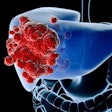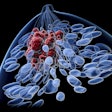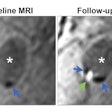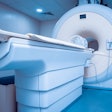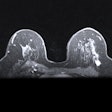Ultrashort-echo-time MRI (UTE-MRI) achieved good diagnostic results in terms of nodule size and morphological assessment among 51 patients who also underwent CT scans. Two chest radiologists then evaluated a total of 119 nodules and masses ranging in size from 4 mm to 88 mm.
Only nine nodules (7%) were not seen on UTE-MRI, primarily due to very low CT attenuation. The sensitivity and specificity of UTE-MRI for identifying part-solid attenuation were 58% and 98%, respectively, but increased to 91% and 98%, respectively, for purely ground-glass opacification attenuation.
"Ultrashort-echo-time at 3 tesla delivers higher-resolution images closer to CT images with a precise morphological characterization of pulmonary nodules and tumors than current state-of-the-art chest MRI sequences," Dr. Mark Wielpütz, from the department of diagnostic and interventional radiology at the University of Heidelberg, told AuntMinnie.com. "This is consistent with previous studies using the UTE-type sequences describing the potential of detecting nodules and differentiating parenchymal lung diseases."
The researchers also recommended that ultrashort-echo-time MRI be included in comprehensive whole-body protocols for nodule detection and lung cancer staging.
"Imaging of the chest may prove useful as a novel modality for lung cancer screening and staging and pediatric oncology to reduce radiation burden in these populations due to repeated surveillance imaging," Wielpütz said.



.fFmgij6Hin.png?auto=compress%2Cformat&fit=crop&h=100&q=70&w=100)




.fFmgij6Hin.png?auto=compress%2Cformat&fit=crop&h=167&q=70&w=250)

